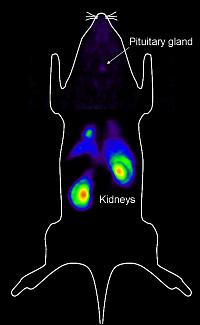
Professor Anthony Davenport
Position: Professor
Personal home page:
http://www-davenport.medschl.cam.ac.uk/
PubMed journal articles - click here
Professor Anthony Davenport is pleased to consider applications from prospective PhD students.
Our research group focuses on understanding the role of G-protein-coupled receptors (GPCRs, targets for about ~50% of current drugs) together with their transmitters in humans. We use in vitro pharmacology and in vivo imaging using positron emission tomography, to determine how these are altered with disease. Major interests are the role of endothelin-1 in human pathophysiology (recently implicated in tumourigenesis of cancers) and discovering role in man of novel ?orphan? GPCRS, originally predicted to exist from the human genome but recently paired with their cognate transmitters (urotensin II, apelin, ghrelin, neuromedin U, kisspeptins, trace amines). We collaborate with the Wolfson Brain Imaging Centre to use PET to non-invasively image receptors in vivo using novel peptide and drug radioligands. Wider research interests are reflected through membership of the International Union of Basic and Clinical Pharmacology Committee on Receptor Nomenclature and Drug Classification
Symplectic Elements feed provided by Research Information, University of Cambridge
Johnström, P., Fryer, T.D., Richards, H.K., Harris, N.G., Barret, O., Clark, J.C., Pickard, J.D. and Davenport, A.P. (2005). Positron emission tomography using 18F labelled endothelin-1 reveals cardiac protection by tissue specific clearance of ETB receptors in vivo. British Journal of Pharmacology, 144, 115-122. Mead, E.J., Maguire, J.J., Kuc, R.E. and Davenport, A.P. (2007). Kisspeptins are novel potent vasoconstrictors in humans, with a discrete localization of their receptor GPR54, to atherosclerosis prone vessels. Endocrinology, 148, 140-147 Clarke M.C.H., Figg N., Maguire J.J., Davenport, A.P., Goddard, M., Littlewood, T.D., Bennett, M.R. (2006). Apoptosis of vascular smooth muscle cells is silent in normal arteries, but induces vulnerable plaques in atherosclerosis Nature Medicine, 12, 1075-1080.
















